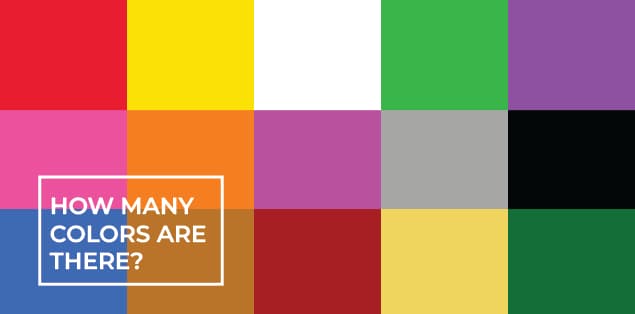How many colors are there? This question doesn’t have a straightforward answer because it depends on how you define “color.” We’ll be looking at visible colors for this article, which the human eye can see.
So how many colors are there? In the RGB color model, we can make approximately 16.7 million colors by combining different red, green, and blue light levels. People with normal eyesight can distinguish millions of different hues. However, human language categorizes these into a limited number of terms.
However, most of these colors are not distinguishable by the human eye – at least not without some training. The average person can only see a limited number of distinct colors, somewhere between 1,000 and 10,000.
Other color models besides RGB, such as CMYK (cyan, magenta, yellow, black), are also used in printing. In the CMYK model, there are even more colors that can make – but again, most of them are not distinguishable by the human eye.
So to answer the question definitively, we would have to say that there are an infinite number of colors because there is no absolute definition for what “color” is. However, we can narrow it down to a few million colors that the human eye can see for practical purposes.
Is There an Infinite Number of Colors?
Every day, colors surround us. The clothes we wear, the food we eat, the scenery we enjoy- colors are everywhere. But what exactly is a color? And is there an infinite number of them? Depending on how you define it, the answer could be yes. So scientists have identified three different properties that contribute to our perception of color: hue, saturation, and brightness.
Hue is what we typically think of when we think of color- it’s the “redness” of red or the “blueness” of blue. Saturation refers to the intensity of a color, while brightness indicates how light or dark it appears. Together, these three properties produce an endless variety of colors. So whether you’re admiring a rainbow or picking out a new paint color for your living room, know that an infinite spectrum of hues surrounds you.
What Are the Colors Of The Rainbow In Order?
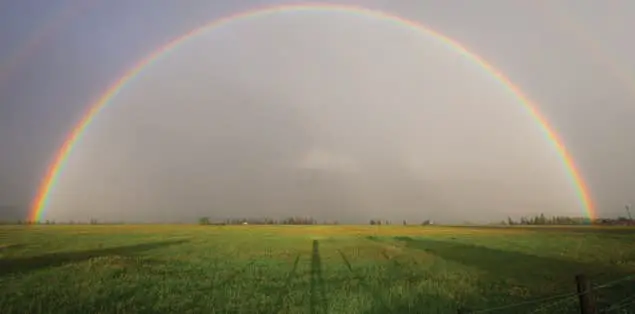
The rainbow colors, in order, are red, orange, yellow, green, blue, and violet. Some people also include indigo as a color of the rainbow. The rainbow colors always appear in this order because they are made up of different wavelengths of light. Red has the longest wavelength, while violet has the shortest. This is why red appears at the top of the rainbow and violet appears at the bottom. The wavelength of ultraviolet light is shorter than that of visible light.
Why Does the Rainbow Have 7 Colors?
Have you ever wondered why rainbows have seven colors? The answer has to do with how light breaks up when it passes through a raindrop.
When light passes through a raindrop, it breaks into seven different colors. These colors are Red, Orange, Yellow, Green, Blue, Indigo, and Violet. The wavelength of each hue is distinct. The longest wavelength is red, while the shortest wavelength is violet.
In different world places, you can observe distinct pairings of these colors. For example, in Europe and North America, the most prevalent color combinations are red, orange, yellow, green, blue, indigo, and violet. However, in Asia and Australia, the order of the colors is often different.
We occasionally use the abbreviation “ROYGBIV” to symbolize the rainbow’s seven hues. This symbol represents the colors red, orange, yellow, green, blue, indigo, and violet.
We often see rainbows after it rains when the sun comes out, and the water droplets act as prisms to break up the sunlight.
What Are The Primary Colors?
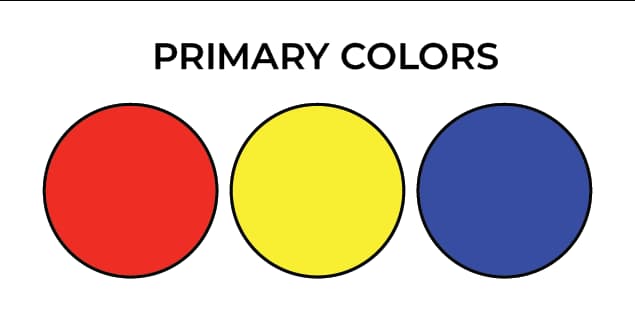
The primary colors are red, yellow, and blue. These are the colors that can combine to create all other colors. When mixing paints or other pigments, it is important to start with the primary colors and add other colors to create the desired shade. For example, adding a little bit of yellow to blue paint will create green paint.
Each primary color has its unique wavelength of different shades of light that you cannot recreate by combining other colors. As a result, the primary colors are an essential part of the color spectrum.
What Color Do Yellow And Blue Make?
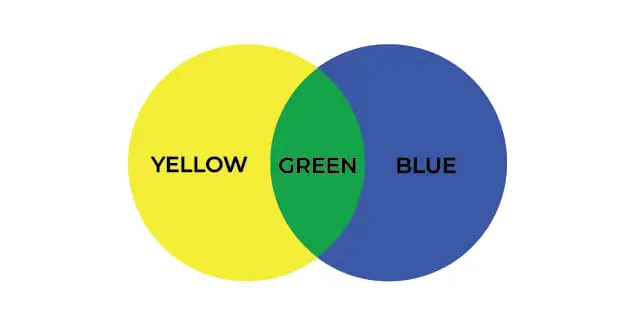
The color that results when we mix yellow and blue is green. This is due to how the colors interact when they are combined. When the two colors mix, the blue pulls the green out of the yellow, resulting in a color closer to green than to either of the original colors.
Yellow and blue are opposite colors on the color wheel, creating a perfect balance when mixed. This is why green is such a popular color in nature – it’s the result of two opposing forces working together.
What Does Purple And Green Make?
When mixed, purple and green usually create a dark brown or black. This is because green is basically made up of yellow and blue, and purple is basically made up of red and blue. When these colors are combined, the result is usually a dark light color.
However, the mix can sometimes create a light brown or beige color. It all depends on the ratio of purple to a green used. If there is more purple than green, the mix will be darker. If there is more green than purple, the color will be lighter. Either way, purple and green usually create a dark color when mixed.
At first glance, purple and green may not seem like they would go well together. After all, green is the color of nature, while purple is often associated with royalty and luxury. However, purple and green can create a surprisingly harmonious effect when used together. The two colors can create a wide range of looks, from playful and whimsical to moody and sophisticated.
What Color Does Orange And Green Make?
When you mix orange and green together, what color do you get? This is a question that has puzzled people for centuries. Some say you get a muddy brown color, while others believe it makes a light greenish hue.
The color orange and green make, when mixed, is known as yellow-green. We usually see this color in nature, like leaves or grass. When we mix these two colors in equal parts, they create a unique hue that is perfect for adding a touch of color to any room.
How to Identify Colors in Nature?
There are a few ways to identify colors in nature. One method is to use the color wheel. The color wheel can help you identify what colors are in nature. Another way to identify colors in nature is to look at a color chart. A color chart can help you identify different colors in nature. Finally, you can use your own eyes to identify colors in nature. By looking at the world around you, you can identify different colors in nature.
What is a Color Wheel?
A color wheel is a tool that can help you identify colors in nature. Red, yellow and blue are the three primary colors on the color wheel. All additional colors are built on top of these three hues. Orange, green, and purple are secondary hues on the color wheel. These may be formed by blending two primary colors. Tertiary colors include red-orange, yellow-orange, yellow-green, blue-green, blue-purple, and red-purple on the color wheel.
How Can a Color Chart Help to Identify Colors in Nature?
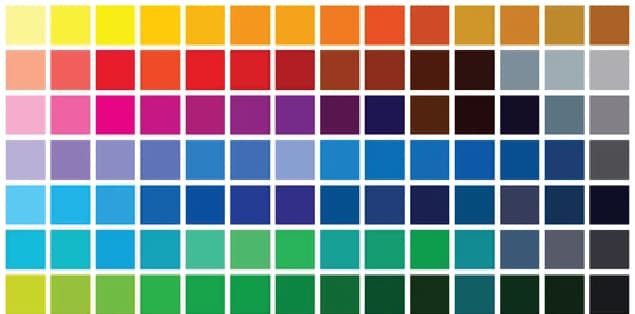
A color chart can help you identify different colors in nature. A color chart is a tool that shows you how different colors look next to each other. This can help you identify colors that are similar to each other.
How Many Colors Are There in Sunlight?
The wavelength of sunlight ranges from about 400 nanometers (nm) to 700 nm. This range of wavelengths corresponds to the colors we see when sunlight breaks up into its colors, also known as the visible spectrum. The visible spectrum colors are red, orange, yellow, green, blue, and violet. Thus, we can say that sunlight contains all of these colors.
The relative proportions of each color in sunlight depend on several factors, including the time of day and year and atmospheric conditions such as clouds and pollution.
How Does Color Work?
When we see color, what we’re seeing is light waves. Various wavelengths of light correlate to different hues. For example, red light has a larger wavelength than blue light. White light encompasses the entire color spectrum, whereas black light is colorless. Some waves are absorbed when light waves hit an object, while others reflect.
Our eyes take in the reflected waves, which our brain perceives as colors. The exact color we see depends on which wavelengths are reflected and absorbed.
Different objects reflect different amounts of colors, so we see such a wide range of colors in the world around us. Color is simply light waves bouncing off objects and into our eyes.
What Are the Brightest Colors in the World?
Several hues might be considered the world’s brightest. However, it is important to note that what one person may consider to be the brightest color, another person may not. This is because everyone perceives colors differently. Some of the colors typically considered to be among the brightest include blue, green, yellow, and orange.
Chroma, the scientific name for color intensity, is measured on a scale from 0 to 100. And while some hues appear brighter than others, there’s no definitive answer to which color is the brightest.
That’s because the brightness of a color is relative and can depend on several factors, including surrounding visual systems, colors, light intensity, and personal color perception. For example, a blue sky appears brighter than a green meadow, but in reality, blue has a lower chroma than green.
Similarly, orange appears brighter than its complementary color, blue, but orange has a lower chroma than blue. Ultimately, the question of which color is the brightest is subjective and open to interpretation.
Are Black and White Real Colors?
In the world of everyday light, we see colors like red, green, and blue. But are these the only “real” colors? For centuries, scientists have debated the nature of color and whether black and white should be considered real colors. On one side of the debate are those who believe that black and white are simply the absence and presence of light. In other words, when all colors are present, we see white light; when no colors are present, we see darkness.
However, some argue that we must consider black and white as real colors because the human vision can perceive them just like any other color. Painters, even today, wear white clothes over other colors. Moreover, recent research has shown that even some animals can see colors beyond the traditional light spectrum. So while the debate over black and white continues, it seems clear that there is more to color than meets the eye.
What Was the First Color in the World?
There are many different theories about what the first color might have been. It was black, according to some, since there was no light. So what does this mean in terms of the first color? If we think about it, the first color must have been the color of the first object in the world.
Final Words
Finally, sunshine contains all of the visible light spectrum’s hues. However, the relative proportions of each color vary depending on several factors, including the time of day and year and atmospheric conditions. This is all about colors. Now, you already know every single piece of information about colors.
